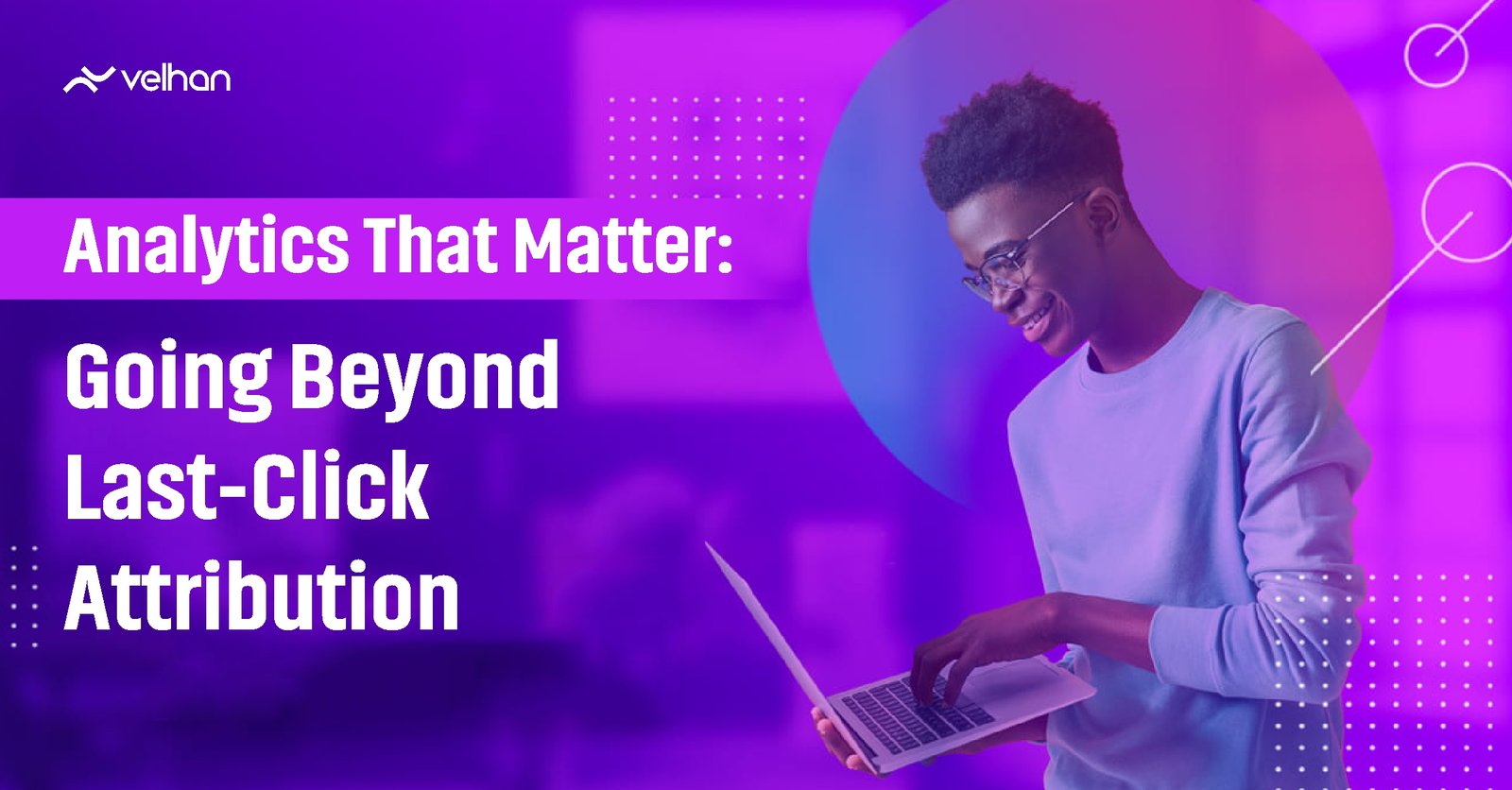
Introduction
In the fast-paced world of digital marketing, data is king — but only if you know how to interpret it correctly. For years, marketers have relied on last-click attribution to understand what drives conversions. While simple and easy to implement, this model often ignores the complexity of modern customer journeys.
Today, it’s no longer enough to give all the credit to the last touchpoint. With consumers interacting with brands across multiple platforms and channels before making a purchase, marketers must move beyond last-click attribution to gain true insights and make data-driven decisions.
In this blog, we’ll explore why last-click attribution is outdated, what modern attribution models can offer, and how you can use advanced analytics that truly matter for better ROI and customer insights.
What is Last-Click Attribution?
Last-click attribution is a model where 100% of the credit for a conversion is given to the final touchpoint the user interacts with before converting. For example, if someone clicks on a Google ad and later purchases after clicking on an email link, the email gets all the credit.
Why It Became Popular:
- Easy to implement
- Supported by tools like Google Analytics (default model)
- Clear and simple to understand
But Simplicity Comes at a Cost:
Last-click attribution ignores the full customer journey. It doesn’t consider other valuable interactions such as:
- Social media awareness
- Blog engagement
- Product page visits
- Retargeting ads
- Email nurturing
Why Last-Click Attribution Fails in Modern Marketing
1. Multi-Channel Journeys Are the Norm
Customers often engage with a brand through multiple touchpoints before making a purchase. For example:
Instagram Ad → Blog Post → YouTube Review → Google Search → Email → Purchase
Giving credit only to the last interaction undervalues all the earlier efforts that influenced the decision.
2. It Undermines Upper-Funnel Efforts
Content marketing, social media engagement, and branding campaigns often don’t result in immediate conversions — but they play a critical role in building trust and moving prospects through the funnel.
3. Skews Budget Allocation
If you only track the last click, you’ll end up over-investing in bottom-funnel channels like paid search while underfunding brand-building activities that actually create long-term growth.
Modern Attribution Models: A Smarter Approach
To get more accurate insights, marketers now turn to multi-touch attribution (MTA) and data-driven models. Here are the most popular ones:
1. Linear Attribution
Distributes credit equally across all touchpoints.
🟢 Pros: Fair representation
🔴 Cons: Not all touchpoints have equal impact
2. Time-Decay Attribution
Gives more credit to touchpoints closer to conversion.
🟢 Pros: Recognizes recency
🔴 Cons: Undervalues early interactions
3. Position-Based (U-Shaped)
40% credit to the first and last touchpoints; 20% shared among the middle ones.
🟢 Pros: Highlights entry and exit points
🔴 Cons: May ignore mid-funnel influencers
4. Data-Driven Attribution (Machine Learning Models)
Uses algorithms to assign credit based on how each interaction influences the conversion probability.
🟢 Pros: Most accurate and customized
🔴 Cons: Requires significant data volume and advanced tools
Analytics That Truly Matter
Modern analytics go beyond attribution — they help understand behavior, intent, friction points, and lifetime value. Here’s what to focus on:
✅ Customer Journey Mapping
Track how users move from awareness to conversion and beyond. Tools like:
- Google Analytics 4
- HubSpot
- Mixpanel
- Hotjar
…help visualize journeys and detect drop-offs.
✅ Engagement Metrics (Not Just Conversions)
Look at:
- Time on page
- Scroll depth
- Video watch time
- Email open rates
These show how engaged users are, even if they don’t convert immediately.
✅ Segmented Funnel Analytics
Analyze funnels by:
- Device type
- Source/medium
- Customer segment
- Campaign ID
This uncovers where optimization is needed and how each segment behaves.
✅ Attribution + LTV (Lifetime Value)
Not every conversion is equal. Attributing revenue based on customer LTV provides a more realistic picture of channel performance.
Best Practices for Attribution-Driven Analytics
1. Use UTM Parameters Consistently
Tag every campaign link to track source, medium, campaign, and content.
2. Integrate Data Sources
Unify data from:
- Ad platforms (Google Ads, Meta)
- CRM systems
- Email tools
- Website behavior
3. Set Clear Conversion Goals
Define micro-conversions like:
- Newsletter sign-ups
- Downloads
- Product views
These help you measure intent, not just transactions.
4. Adopt GA4 and Enhanced Conversions
Google Analytics 4 supports event-based tracking and data-driven attribution, offering a better foundation for advanced insights.
Real-World Example: Attribution In Action
Case Study: Ecommerce Store
Challenge: Over-reliance on Google Ads (last-click)
Solution:
- Introduced GA4 + HubSpot integration
- Used data-driven attribution
- Tracked newsletter sign-ups and product page views
Outcome:
- Found that Facebook ads had 3x higher assisted conversions
- Shifted 30% of budget from Google to Meta
- Improved overall ROAS by 47% in 3 months
Conclusion: It’s Time to Move Beyond Last-Click
Relying solely on last-click attribution in 2025 is like using a flip phone in the age of smartphones. Marketing success requires understanding the entire journey, not just the final step.
With modern tools, data, and models available, you have the power to make smarter decisions that drive results.
So if you want analytics that actually matter — start looking at the big picture, not just the last click.


